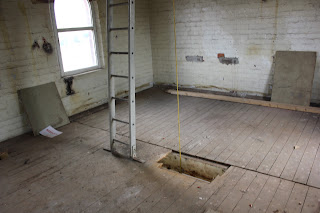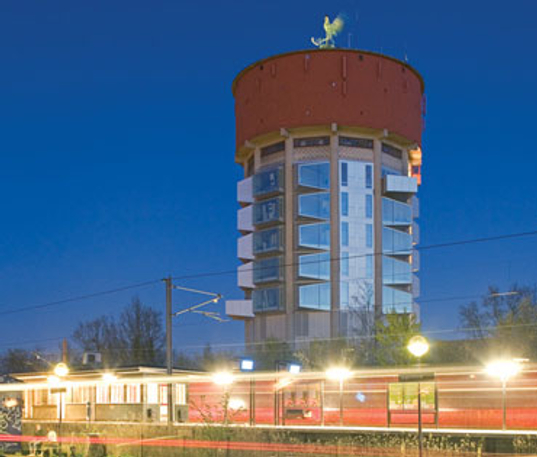Great news, yesterday i contacted the owner of Ormskirk's hospital water tower. I explained my honours project to him and luckily he is happy to help! He has directed me to the site on the council's website where i can find plans of the building and area and we have arranged to meet up this weekend so that i can take a look around the property. So lots of pictures to come...
In the meantime I am looking into the history of this tower and other water towers. There is not a lot i could find on the Internet. Here is some information i found on the BWTAS (British water tower appreciation society) blog;
It was built in 1860 to provide water to the
Poor Law workhouse that then became Ormskirk Hospital in the 1950's.
“This is an iconic, landmark building
which offers a fantastic opportunity for those looking to create their dream
home. The Water Tower is of particular architectural interest due to its five
storeys, side projectile pipes, arched windows and the large water tank on top.
Planning permission has been granted for two flats but there is potential to
create one huge five-storey residence. It will make for a stunning home.”
The 175 square meter tower was part of the hospital site purchased
and developed by Persimmon Homes as Nightingale Walk.
Nearby residents also said they were in favour of
the development. Neil Wynne, of Pinfold Road, said: "I would prefer it
if someone moved into the water tower."
Ormskirk is also known for another water tower,
the concrete 'UFO' at Scarth Hill the east of Ormskirk.
Sadly there is also a very large derelict one at
Greetby Hill, now obviously a missed development opportunity but in its dotage
has become reminiscent of a Victorian folly. An application to convert it into
seven apartments in 2001 was later withdrawn
About BWTAS
The British Water Tower Appreciation Society exists to connect
enthusiasts of water towers to share their enjoyment of their artistic,
cultural, architectural, historical, social and engineering significance.
An older photo of the tower
I love the black and white roof of the building and it's five storeys. This means i can possibly find 5 different things to have inside the tower as a public attraction.
What is a water tower?
A water tower is a structure designed to hold a reservoir of water and also to help maintain the water pressure in a municipal water system. Water towers have been used for centuries to hold supplies of water, and are capable of providing water even in the event of a power outage or pump failure, because they are elevated, meaning that the water in the water tower will pressurise the pipes with the assistance of gravity. Many areas use water towers as backup water supply systems to ensure that citizens have access to running water, and most small towns can store up to a day's worth of water in their water towers.
For every foot above the ground, a water tower is capable of generating more pressure. Typically, a water tower is installed on raised ground, and the tank of the tower is elevated to increase the potential pressure. In a small town, a single water tower can pressurise enough water to supply water to the entire town. In large cities, tall private buildings sometimes use water towers to supply their tenants, since the city's water system is not pressurised enough to get water to the top floors in peak periods of demand. When used in combination with a municipal water system, the pressurising ability of a water tower serves two primary functions.
The first function is to maintain constant pressure in the system, and prevent the emergence of negative pressure situations. Negative pressure can suck groundwater of other sources of pollution into the water supply, contaminating the town's water. A town with a water tower, however, can rest assured that the water lines will be fully pressurised at all times, keeping the water safe to drink. In some areas, a water tower must be attached to the municipal water system for this reason.
The second function of a water tower is more economic. A water tower can deliver water at periods of peak demand relatively easily, while a pump may have difficulties. By using a pump and a water tower, a town can save costs on the pump by pumping for average demand. When demands for water outstrip the abilities of the pump, the water tower kicks in to supply more water. When the pump is providing more water than the town needs, as often happens at night, the excess fills the water tower so that it is ready for the next period of peak demand.

































